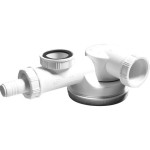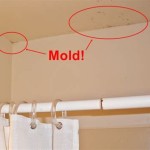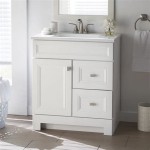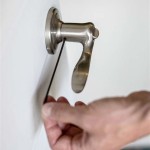How to Stop a Dripping Bathroom Faucet
A dripping bathroom faucet is more than just an annoyance; it represents a persistent waste of water and, consequently, of money. Addressing this issue promptly is crucial for home conservation and cost-effectiveness. This article provides a comprehensive guide on how to identify the cause of a dripping faucet and offers detailed instructions on how to repair it, covering various faucet types and potential problems.
Before commencing any repair work, safety should be the paramount concern. The first step is to turn off the water supply to the faucet. Typically, shut-off valves are located beneath the sink. Turn these valves clockwise until they are fully closed. If individual shut-off valves are absent, the main water supply to the house will need to be shut off. After shutting off the water supply, open the faucet to relieve any remaining pressure in the pipes. This will prevent water from spraying or gushing out when disassembling the faucet.
Gathering the necessary tools and materials is another essential preliminary step. The specific tools required will vary depending on the type of faucet, but a basic toolkit should include: an adjustable wrench, a Phillips head screwdriver, a flathead screwdriver, a set of Allen wrenches, plumber's grease, a utility knife, and possibly a valve seat wrench and a faucet handle puller. Identifying the exact model of the faucet can be incredibly helpful in sourcing the correct replacement parts. Many faucets have the manufacturer's name and model number printed somewhere on the faucet body. With this information, you can often find detailed diagrams and repair guides online or at your local hardware store.
Identifying the Type of Faucet
Different types of faucets employ different mechanisms, and understanding the type you are working with is fundamental to diagnosing and repairing the drip. The four main types of faucets are compression faucets, cartridge faucets, ball faucets, and ceramic disc faucets.
A compression faucet is the oldest and most basic type. It is characterized by two separate handles, one for hot water and one for cold. These faucets use rubber washers that are compressed against a valve seat to stop the flow of water. A dripping compression faucet is often due to a worn or damaged washer. Signs of a compression faucet include visible screws on the handles or around the base of the faucet, and a generally more traditional aesthetic.
Cartridge faucets, known for their ease of use and sleek design, operate using a cartridge inside the faucet body. These faucets generally have a single handle that controls both the temperature and flow of water. Moving the handle up and down adjusts the water flow, while moving it left and right adjusts the temperature. A dripping cartridge faucet usually indicates a faulty cartridge that needs replacement. Often, the faucet will become increasingly difficult to operate, or the temperature and flow will not be as precise as it used to be.
Ball faucets, another type of single-handle faucet, use a ball valve mechanism. The handle controls a slotted metal ball inside the faucet body. This ball regulates the flow and temperature of water as it rotates. Leaks in ball faucets are often caused by worn-out O-rings and springs. These faucets are distinct because they often have a curved spout and a handle that pivots around a central ball joint.
Ceramic disc faucets are the most modern and durable type. They also use a single handle, but instead of a ball or cartridge, they utilize two ceramic discs within a cylindrical chamber. When the handle is turned, the discs slide over each other, allowing or blocking the flow of water. Dripping ceramic disc faucets are typically caused by sediment buildup or minor imperfections in the ceramic discs. Although these faucets are typically the most durable, hard water can lead to wear and tear over time.
Repairing a Compression Faucet
The most common culprit behind a dripping compression faucet is a worn-out rubber washer. Over time, the constant compression and exposure to water can cause the washer to become brittle, cracked, or misshapen, preventing it from forming a tight seal against the valve seat.
To repair a compression faucet, begin by shutting off the water supply and relieving any pressure in the pipes as previously described. Next, remove the decorative cap on the faucet handle, usually by gently prying it off with a flathead screwdriver or a utility knife. Underneath the cap, you will find a screw. Unscrew this screw and remove the handle. Be gentle during this process, as the components might be fragile.
With the handle removed, you will see a packing nut. Use an adjustable wrench to loosen and remove this nut. Underneath the packing nut, you will find the stem. Carefully unscrew and remove the stem. At the base of the stem, you will find the rubber washer. Remove the old washer and replace it with a new one of the same size and type. Secure the new washer with the screw or nut that holds it in place.
Before reassembling the faucet, inspect the valve seat. This is the part of the faucet body where the washer presses against to stop the flow of water. If the valve seat is corroded or damaged, it may need to be cleaned or replaced. A valve seat wrench can be used to remove the valve seat. If the valve seat is only mildly corroded, you can try cleaning it with a small wire brush or sandpaper. Replace the valve seat if the damage is severe.
Once the washer and valve seat are in good condition, apply a small amount of plumber's grease to the stem threads and any other moving parts. This will help ensure smooth operation and prevent future corrosion. Reassemble the faucet in the reverse order of disassembly, tightening all connections securely but not over-tightening. Over-tightening can damage the components.
Turn the water supply back on slowly and check for leaks. If the faucet still drips, double-check that the washer is properly installed and that the valve seat is clean and undamaged. If necessary, disassemble the faucet again and make any necessary adjustments.
Repairing Cartridge, Ball, and Ceramic Disc Faucets
While the principle of stopping the water supply remains consistent, the method for fixing cartridge, ball, and ceramic disc faucets differs considerably from compression types. Each has its distinct design and components.
For cartridge faucets, the issue is generally a worn or faulty cartridge. The process involves removing the handle, which may be secured by a set screw usually concealed beneath a decorative cap. Once the handle is off, a retaining clip, which holds the cartridge in place, needs to be removed. Using pliers, carefully pull the clip out. With the clip removed, the old cartridge can be pulled straight out. Compare the new cartridge to the old one to ensure it matches and then insert the new cartridge. Replace the retaining clip and reassemble the handle. Be sure to align the cartridge correctly. It is often marked to help with this.
Ball faucets are prone to leaks due to worn springs and rubber seats. Accessing these components requires disassembling the faucet by first loosening the set screw on the handle. After removing the handle, the decorative cap and collar can be unscrewed. This reveals the ball valve assembly. The ball can be lifted out, exposing the inlet seals, O-rings, and springs. Replace these components, ensuring they are properly seated. Apply plumber's grease to the ball before reassembling the faucet. Align the ball correctly before reassembling the cap and handle.
Ceramic disc faucets, while durable, may drip due to mineral buildup obstructing the ceramic discs. Disassembly is similar to that of cartridge faucets. The handle is removed, often secured with a set screw. The cylinder cap is then unscrewed, exposing the ceramic disc cylinder. This can be carefully lifted out and the discs inspected for debris or damage. Clean the discs with a gentle cleaner. If the discs are damaged, replacement is necessary. When reassembling, align the cylinder’s notches properly. Apply plumber's grease to any moving parts. Reassemble the faucet ensuring that the cylinder cap is not overtightened.
In all three faucet types, thoroughly cleaning all components before reassembly is crucial. Mineral deposits and debris can accumulate over time, affecting the performance of the faucet.
If the dripping persists even after replacing the respective components, further inspection may be needed. The faucet body itself could have hairline cracks or the valve seat could have unseen damage in cartridge, ball, and ceramic disc faucets. In such cases, professional assistance might be warranted.
While replacing the specific component causing the drip is the primary focus, it's also wise to inspect and replace any other worn parts during the repair process. This proactive approach can prevent future leaks and extend the lifespan of the faucet. For example, if replacing the cartridge in a cartridge faucet, consider replacing any O-rings or seals that may be showing signs of wear.
Proper maintenance can significantly prolong the life of a bathroom faucet and prevent future dripping issues. Regularly cleaning the faucet and its components can help prevent mineral buildup. Gently wipe down the faucet with a soft cloth and mild cleaner to remove any surface deposits. Avoid using abrasive cleaners, as these can scratch the finish. Periodically check for leaks around the base of the faucet and the handles. Addressing minor issues promptly can prevent them from escalating into more significant problems.

How To Fix A Bathroom Faucet 14 Steps

How To Fix A Bathroom Faucet 14 Steps

Part 1 Of 2 How To Fix A Dripping Faucet

How To Fix A Leaking Bathtub Faucet Diy Family Handyman

How To Fix A Leaking Bathtub Faucet The Home Depot

5 Reasons Your Faucet Is Dripping Water How To Fix It

Simple Ways To Fix A Leaky Delta Bathroom Sink Faucet

How To Fix A Dripping Bathroom Faucet

How To Fix A Leaky Faucet Guides For Every Design And Style

How To Fix A Leaking Bathtub Faucet The Home Depot
Related Posts







